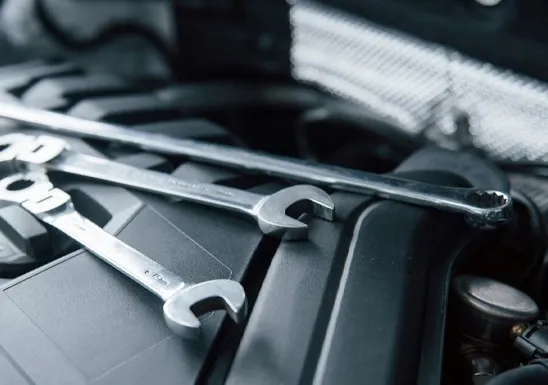Dec . 26, 2024 11:37 Back to list
Hydraulic Cylinder Seal Wipers for Enhanced Performance and Durability
Understanding Hydraulic Cylinder Wiper Seals Importance and Functionality
Hydraulic systems are integral to numerous industrial machinery and equipment, providing the force necessary for various applications, from construction to automotive systems. A crucial component within these hydraulic systems is the hydraulic cylinder, which converts hydraulic energy into mechanical energy. To ensure optimal performance and longevity of hydraulic cylinders, wiper seals play a significant role. In this article, we will explore the importance of hydraulic cylinder wiper seals, their functionality, types, and maintenance considerations.
What Are Hydraulic Cylinder Wiper Seals?
Wiper seals, commonly known as rod seals or scraper seals, are designed to prevent the ingress of dirt, debris, moisture, and other contaminants into the hydraulic cylinder. They are typically located at the top of the rod of the hydraulic cylinder, where the rod exits the cylinder body. These seals act as the first line of defense, safeguarding the integrity of the hydraulic system.
Importance of Wiper Seals
The primary function of wiper seals is to protect the internal components of the hydraulic cylinder. Contaminants such as dust and dirt can lead to wear and tear on seals and other moving parts, resulting in reduced efficiency and potential system failure. By keeping these harmful elements at bay, wiper seals help to
1. Enhance Longevity By preventing contamination, wiper seals extend the life of hydraulic cylinders, decreasing the frequency of repairs and replacements.
2. Maintain Performance Clean hydraulic fluid optimizes system pressure and flow, ensuring that the machinery operates smoothly and efficiently.
3. Prevent Leaks By keeping contaminants out, wiper seals help to reduce the risk of leaks that can arise from seal degradation, preserving hydraulic fluid and system integrity.
4. Increase Safety Hydraulic systems often operate under high pressures, and any failure can lead to catastrophic outcomes. Wiper seals contribute to the overall safety of the system by ensuring reliable operation.
Types of Wiper Seals
There are various types of wiper seals available, each designed for specific applications and operating conditions. Some of the most common types include
hydraulic cylinder wiper seal

2. Polymer Wiper Seals Constructed from high-performance materials, such as polyurethane, these seals offer superior abrasion resistance and are ideal for harsh environments.
3. Double-Acting Wipers Designed for applications where the rod may move in both directions, these wipers seal effectively when the rod is retracting and extending.
4. Low-Friction Wipers Equipped with special coatings or materials to reduce friction, these wipers enhance efficiency and performance, particularly in high-speed applications.
Maintenance and Care
Regular maintenance is essential to the performance and longevity of wiper seals. Here are some best practices to consider
1. Routine Inspections Regularly inspect wiper seals for signs of wear, cracks, or degradation. Early detection can prevent minor issues from escalating into major failures.
2. Cleaning Keep the rod and surrounding areas clean. Contaminants can accumulate on the rod, leading to increased wear on the wiper seals. Use clean, dry cloths to wipe the rod before retraction.
3. Proper Handling During installation or maintenance, handle the hydraulic cylinder carefully to avoid damaging the wiper seals or other components.
4. Use Quality Fluids Employing high-quality hydraulic fluids can reduce the risk of seal degradation. Always ensure compatibility with the wiper seal material.
5. Follow Manufacturer Guidelines Adhere to the manufacturer's specifications for wiper seal types and replacements to ensure compatibility and performance.
Conclusion
In summary, hydraulic cylinder wiper seals are crucial components that protect the integrity and functionality of hydraulic systems. By keeping contaminants at bay, maintaining the efficiency of hydraulic fluid, and preventing expensive repairs, these seals contribute to the safety and performance of machinery across various industries. Regular maintenance, proper handling, and the use of quality materials will ensure that hydraulic cylinder wiper seals continue to perform effectively, safeguarding the overall operation of hydraulic systems. Understanding their role not only enhances operational efficiency but also contributes to the longevity of expensive machinery and equipment.
-
Unlocking the Potential of Hydraulic Systems with Essential Sealing Solutions
NewsAug.06,2025
-
Unleash the Power of Your Hydraulic Systems with Our Premium Seal Kits
NewsAug.06,2025
-
Specialized Hydraulic Seal Kits for Breakers, Pistons, and Presses
NewsAug.06,2025
-
Revitalize Hydraulic Systems with Premium Repair and Seal Kits
NewsAug.06,2025
-
Fortify Your Cylinders with Premium Sealing Solutions
NewsAug.06,2025
-
Elevate Hydraulic System Reliability with Specialized Seal Kits
NewsAug.06,2025
-
TCN Oil Seal Metal Ring Reinforcement for Heavy Machinery
NewsJul.25,2025
Products categories
















